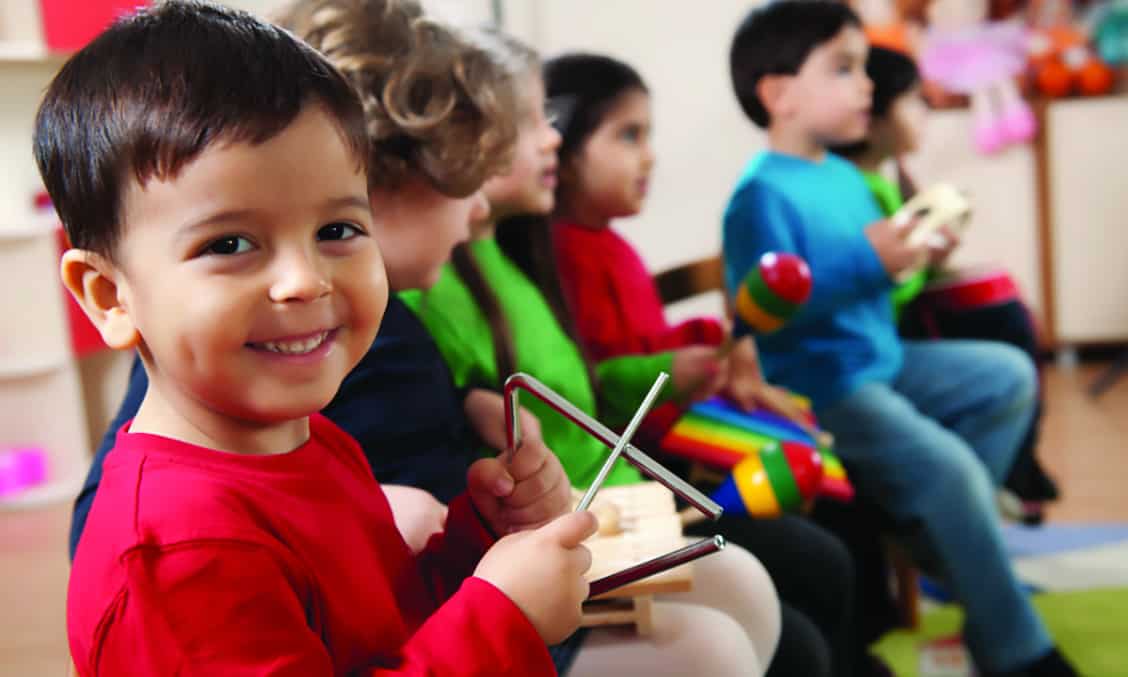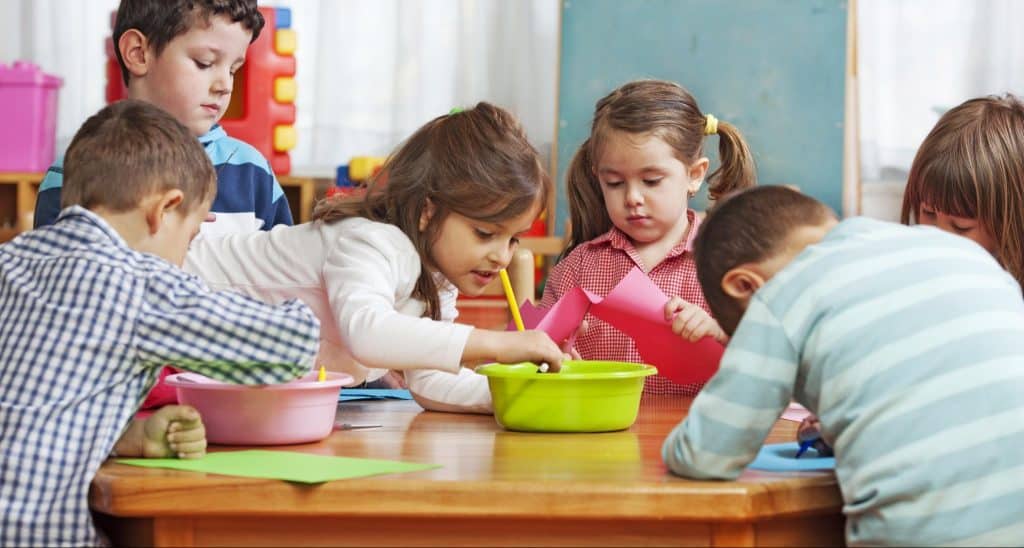Did you know that music lessons can help students excel in STEM? Or that art programs in class can help children manage their stress and achieve higher test scores over time? Art is more than just an elective that students can go without. If you know how to get the most out of them, art activities can have as much positive effect on a student’s school success as “essential” subjects like writing or math.
This guide will walk you through what you need to know about the importance and benefits of art in education. Then, we’ll cover what you can do to make art education part of your curriculum and a few educational art activities for young learners.
Where Did the Arts Go?

Over the past few decades, time spent on the arts in school has decreased, while time spent on math and language arts has increased.[6] Because the arts aren’t featured in standardized tests, it’s easy for teachers to assume any time spent on them takes away from time they need to spend on tested subjects.[8] And as standardized tests are used to evaluate both student and teacher performance, more time that was once spent on the arts is diverted to subjects that students are tested on.
And this decreasing link between art and education isn’t just a middle or high school problem. Over four million elementary school children receive no visual arts lessons in the classroom.[6] While this omission is well-meaning—to get students performing at-grade level—it also implies that art is at best optional and at worst a waste of time.
It’s easy to see the benefits of teaching your students core academic subjects like math, science, or reading. We understand, for example, that literacy is a skill that will help a student learn and communicate for the rest of their life. But when it comes to the importance of art in school, the benefits may be more subtle.
Why Is Art Important in Education?
Why integrate arts into your classroom at all when there’s so much else you need to teach?
In terms of social-emotional benefits, art may play an important role in childhood development because it promotes healthy stress management. Students who received art instruction in their classrooms had reduced levels of the stress hormone cortisol.[13] This indicates that art can help students relax or cope with overwhelming emotions. And the effect was particularly noticeable in students from low socioeconomic status (SES) homes, who are more at risk for unhealthy stress levels.[8]
Art can do wonders for your classroom environment. Exposure to art in early grades is directly linked to student engagement, as well as school readiness skills for low SES students.[4,7] And statistically, classrooms who integrate art education into their curriculum see direct academic benefits: higher test scores and school achievement over time.[12] These academic benefits continue to build, and by the time they graduate, students whose schools included art education were more likely to attend college.[12]
Overall, a student’s academic and social-emotional development is boosted by the level of art curriculum incorporated in their classroom. As an elementary teacher, it may seem tough to find time for art lessons when your school schedule is already filled with core subjects. But art can be easy to fit into your regular lessons—and it may help students learn science and math subjects more effectively.
Integrate Arts into Your Curriculum With STEAM
 Why integrate art into your school—particularly math and science—curriculum? As it turns out, the link between success in the arts and sciences may be closer than you think. According to a survey college graduates in science, technology, engineering, and math (i.e., STEM subjects), 92% took music lessons as a child compared to 34% of the general population.[11] And when art activities are included in science classes, low-achieving students retain more knowledge and display more creativity with their assignments.[15]
Why integrate art into your school—particularly math and science—curriculum? As it turns out, the link between success in the arts and sciences may be closer than you think. According to a survey college graduates in science, technology, engineering, and math (i.e., STEM subjects), 92% took music lessons as a child compared to 34% of the general population.[11] And when art activities are included in science classes, low-achieving students retain more knowledge and display more creativity with their assignments.[15]
One easy way to get the positive effects of art in your classroom is by switching from STEM to STEAM curriculum. While STEM lessons only focus on science, math, engineering, and technology, STEAM incorporates art to provide a more comprehensive curriculum.[14] And best of all, art teaches students to be creative and solve problems—both of which are skills that directly translate to STEM.[4]
To get the most out of art lessons and activities, try to plan them around your students’ interests or something you’re studying in class.[2,3] If you have students who love dinosaurs, for example, you could hand out coloring sheets of a T-Rex. Or if you’re studying the Revolutionary War, have students create a small script about the signing of the Declaration of Independence. Keep these assignments developmentally appropriate so students feel engaged with the art activity without getting overwhelmed.[1]
If you don’t have time to add as many art lessons to your curriculum as you’d like, consider starting an after-school art program. Even simple activities like a weekly painting club or school band allow your students to reap the benefits of a STEAM education. After-school arts programs are strongly linked to student engagement in class.[16] Not only will your students pick up strong social-emotional and academic skills from the program, but they may also feel more involved with their school and peers.
5 Creative Art Activities for Elementary Students
Art lessons are a great way to engage your students while teaching them creativity, critical thinking, and problem-solving skills. And, best of all, you can easily integrate art activities into your regular academic curriculum.
These five activities are a great way to keep art in your school curriculum and move towards STEAM-based education:
- DIY Drum and Kazoo: With this activity, your students can create homemade instruments together and learn a little about how sound works.
- Painting with Bubbles: Introducing basic chemistry to elementary school students? With this activity, students mix bubble solution with paint
- Heart-Shaped Math Puzzle: This cute shape puzzle is a great way to teach math while creating art with your class.
- Pool Noodle Boats: Help your students craft their own pool noodle boats, then race them as a class for a quick lesson on buoyancy!
- Van Gogh-Inspired Art: Teach your students a mini history lesson on Vincent van Gogh while creating vibrant, swirly art as a class.
Sources:
- Eckhoff, A. The Importance of Art Viewing Experiences in Early Childhood Visual Arts: The Exploration of a Master Art Teacher’s Strategies for Meaningful Early Arts Experiences. Early Childhood Education Journal, April 2008, 35(5), pp. 463-472.
- Clemens, S.G. Art in the Classroom: Making Every Day Special. Young Children, January 1991, 46(2), pp. 4-11.
- Epstein, A.S. Thinking about Art: Encouraging Art Appreciation in Early Childhood Settings. Young Children, May 2001, 56(3), pp. 38-43.
- Gray, C.M. Hope for the Future? Early Exposure to the Arts and Adult Visits to Art Museums. Journal of Cultural Economics, June 1998, 22(2-3), pp. 87-98.
- NEA Arts Staff. Engaged and Empowered: The Importance of Arts Education. Retrieved from arts.gov: https://www.arts.gov/sites/default/files/nea_arts/neaARTS_2013_v1.pdf.
- Parsad, B., Coopersmith, J., and Spiegelman, M. Arts Education in Public Elementary and Secondary Schools. Retrieved from ed.gov: http://www.nces.ed.gov/pubs2012/2012014rev.pdf.
- Hancock, D.R., and Wright, S.W. Enhancing Early Childhood Development Through Arts Integration in Economically Disadvantaged Learning Environments. The Urban Review, September 2018, 50(3), pp. 430-446.
- Abdul-Alim, J. Educators Work to Resuscitate Arts Education After No Child Left Behind. Retrieved from diverseeducation.com: https://diverseeducation.com/article/50028/.
- Brown, E.D., Garnett, M.L., Anderson, K.E., and Laurenceau, J. Can the Arts Get Under the Skin? Arts and Cortisol for Economically Disadvantaged Children. Child Development, 2017, 88(4), pp. 1368-1381.
- Jaschke, A.C., Honing, H., and Scherder, E.J.A. Longitudinal Analysis of Music Education on Executive Functions in Primary School Children. Retrieved from frontersin.org: https://www.frontiersin.org/articles/10.3389/fnins.2018.00103/full.
- LaMore, R., Root-Bernstein, R., Root-Bernstein, M., Schweitzer, J.H., Lawton, J.L., Roraback, E., Peruski, A., VanDyke, M., and Fernandez, L. Arts and Crafts: Critical to Economic Innovation. Economic Development Quarterly, 2013, 27(3), pp. 221-229.
- ScienceDaily Staff. Effective arts integration improves test scores. Retrieved from sciencedaily.com: https://www.sciencedaily.com/releases/2013/10/131022170624.htm.
- Kaimal, G., Ray, K., and Muniz, J. Reduction of Cortisol Levels and Participants’ Responses Following Art Making. Art Therapy: Journal of the American Art Therapy Association, 2016, 33(2), pp. 74-80.
- ScienceDaily Staff. Art could help create a better ‘STEM’ student. Retrieved from sciencedaily.com: https://www.sciencedaily.com/releases/2013/12/131203091633.htm.
- Hardiman, M.M., JohnBull, R.M., Carran, D.T., and Shelton, A. The effects of arts-integrated instruction on memory for science content. Trends in Neuroscience and Education, March 2019, 14, pp. 25-32.
- Montgomery, D., Persaud, N., and Rogovin, P. Something to Say: Success Principles for After-School Arts Programs from Urban Youth and Other Experts. Retrieved from wallacefoundation.org: https://www.wallacefoundation.org/knowledge-center/Documents/Something-to-Say-Success-Principles-for-Afterschool-Arts-Programs.pdf.

